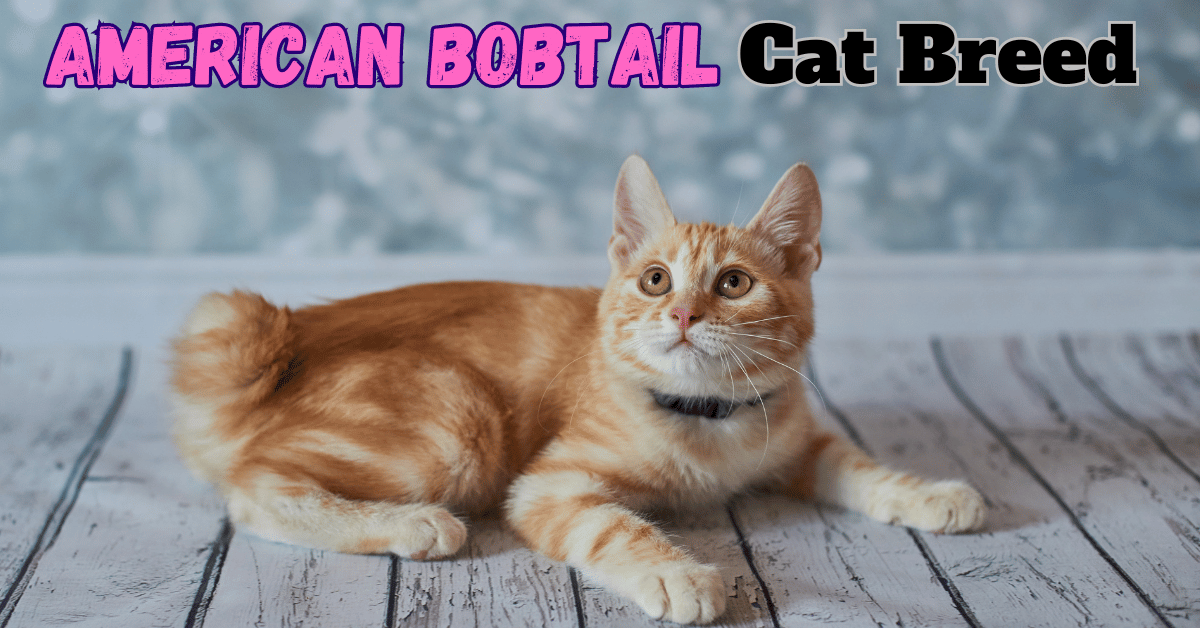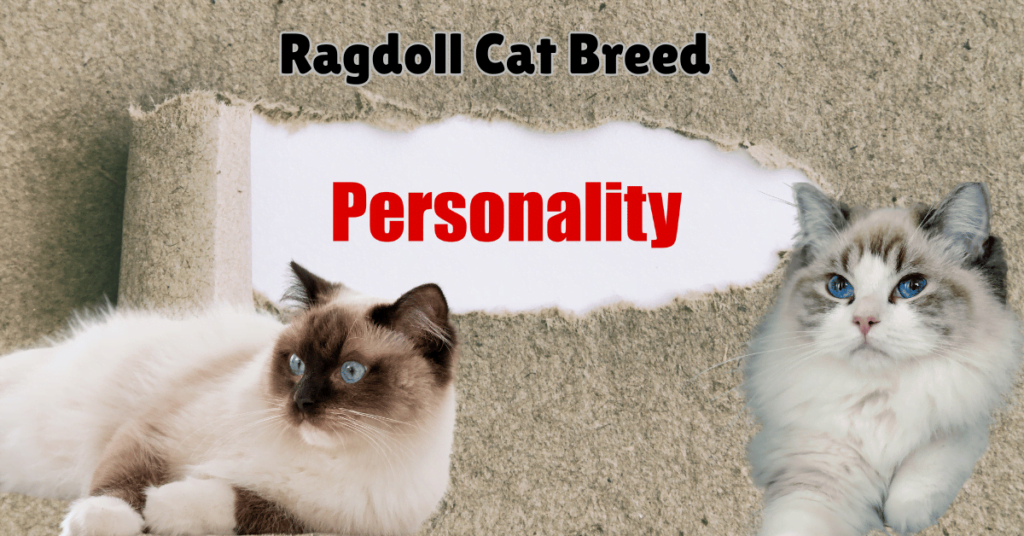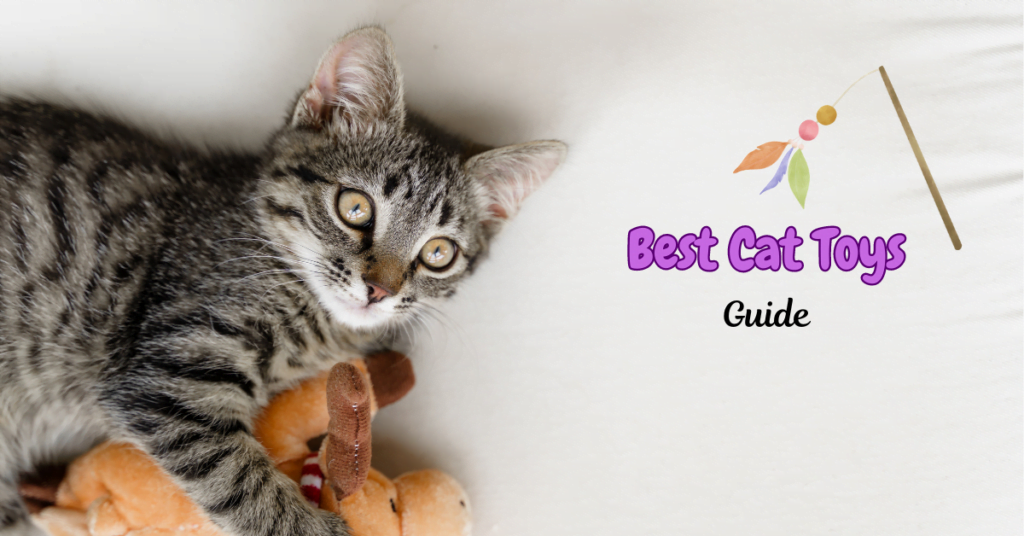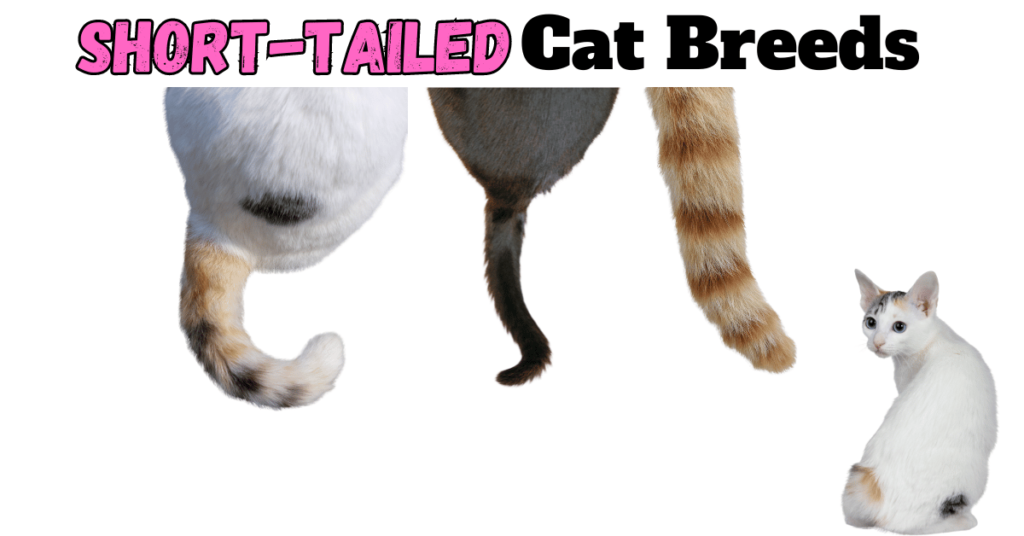This post contains affiliate links and I will be compensated if you make a purchase after clicking on my links.
The American Bobtail Cat Breed: Short Tails, Strong Bonds
The American Bobtail, a breed that emerged in the vibrant tapestry of the late 1960s, captures attention with its sturdy build and unmistakable short “bobbed” tail—about one-third to one-half the length of an ordinary cat’s tail. This unique feature is the result of a dominant genetic mutation that affects tail development.
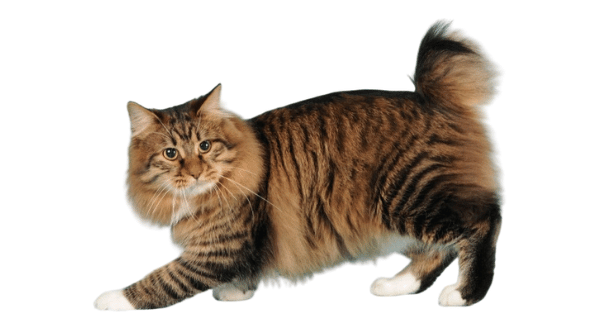
Don’t be fooled by the name, though! The American Bobtail has no genetic ties to other short-tailed breeds like the Japanese Bobtail, Cymric, or Kurilian Bobtail.
Beyond their striking “wild” markings, American Bobtails are famed for their exceptionally sweet dispositions, earning them a spot as cherished companions in many homes. They straddle the line between the exotic allure of a wildcat and the friendly demeanor of a household pet.
Fact: The American Bobtail’s short tail results from a dominant genetic mutation, unlike the recessive gene found in the Japanese Bobtail.
Where Did the American Bobtail Originate?
The origin of the American Bobtail is wrapped in urban legend, suggesting it might be the result of crossbreeding between a domestic tabby and a wild bobcat. However, the breed’s distinctive short tail comes from a spontaneous genetic mutation within the domestic cat population, possibly related to the dominant Manx cat breed gene.
This breed wasn’t officially developed until the 1960s. According to the lore, vacationers John and Brenda Sanders adopted a bobtailed cat while visiting Arizona. Upon returning home to Iowa, they allowed their new feline friend to mate with their female cat, leading to a litter of kittens that inherited the unique short tail and sweet personalities.
The gene pool for the American Bobtail is exceptionally diverse, primarily because pedigreed cats have never been used in its breeding. Over time, breeders have enhanced the cat’s genetic makeup to produce a new and improved strain, available in virtually all colors and coat types.
This diversity helped the breed gain recognition by The International Cat Association (TICA) in 1989. Subsequently, the American Bobtail was accepted into championship competitions by TICA, the Cat Fanciers’ Association (CFA), and the American Cat Fanciers Association (ACFA).
Physical Characteristics of the American Bobtail
The American Bobtail stands out with its robust and distinctively wild appearance. This breed can weigh up to 16 pounds, with males typically ranging from 12 to 16 pounds and females slightly lighter at 7 to 11 pounds. At about 20 inches in length, their physique is strikingly rectangular, supported by substantial boning and a stocky build.
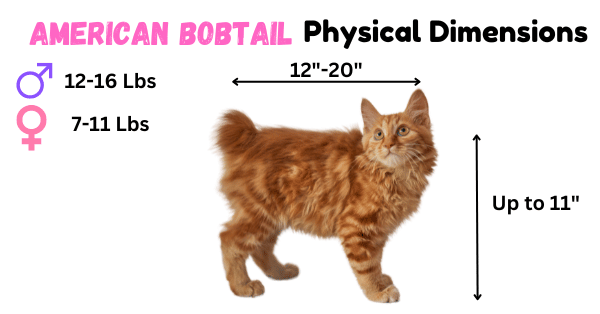
A defining trait of the American Bobtail is its notably short tail, typically ranging from 1 to 4 inches in length, which is visibly prominent above the back when held upright, in line with breed standards.
Their coat, intentionally shaggy rather than dense or fluffy, underscores their rugged, natural appeal. In terms of color, the breed is versatile, but in the show ring, a “wild” tabby appearance is particularly prized, highlighting their lynx-like allure.
The American Bobtail’s head features a broad wedge shape, highlighted by a concave curve that rises to a prominent brow and a robust muzzle, framed by prominent whisker pads and a gently sloping nose.
The ears, medium in size and wide at the base, are perfectly set to balance the facial contours, finishing with rounded tips. Their eyes, nearly almond-shaped and set wide apart, come in striking shades of copper, gold, yellow, green, or blue, contributing to their wild and captivating appearance.
Fact: The American Bobtail matures more slowly than many domestic cat breeds, typically taking two to three years to fully develop.
Personality Traits of the American Bobtail
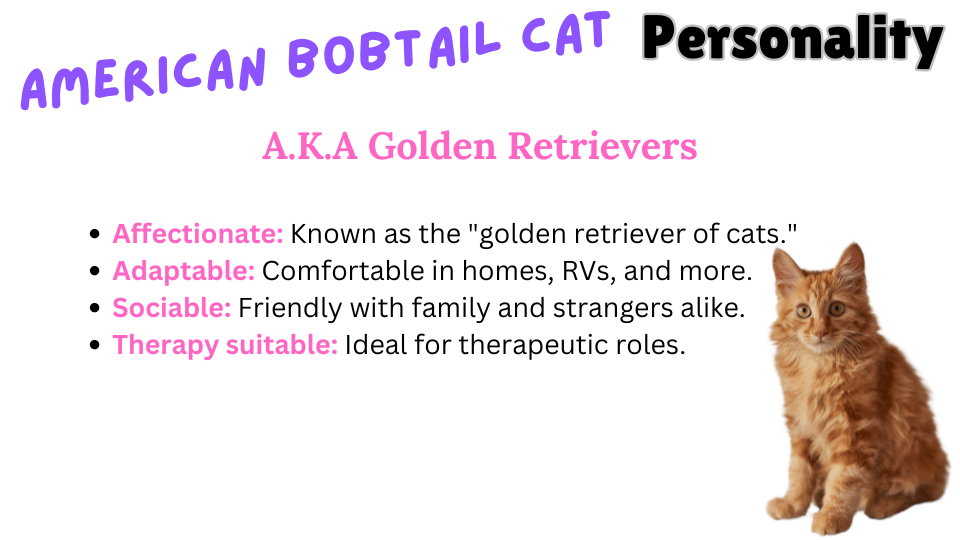
Don’t let their wildcat looks fool you—the American Bobtail is often dubbed the “golden retriever of the feline world” thanks to its affectionate and easygoing nature. These cats are the perfect companions for anyone, from singles to families with kids and other pets. They’re exceptionally adaptable, thriving in various living environments including RVs, semi-trucks, and sailboats.
American Bobtails aren’t just friendly; they’re outgoing with strangers too, making them excellent candidates for therapy work. Their open, sociable temperaments make them not only beloved pets but also valuable helpers in therapeutic settings.
Caring for the American Bobtail Cat Breed
Health Issues and Lifespan
When adopting an American Bobtail, particularly those with very short or nonexistent tails, it’s important to secure a written health guarantee from the breeder. This helps protect against potential spinal issues, such as fecal incontinence, and supports a healthy lifespan of 12 to 15 years.
Other Common Health Concerns include:
- Polycystic Kidney Disease (PKD): This condition involves the development of cysts on one or both kidneys, which can affect kidney function over time.
- Hypertrophic Cardiomyopathy: This heart condition, where the heart muscle thickens, is common in cats and can lead to serious health issues.
- Hip Dysplasia: Although more typically seen in dogs, hip dysplasia can also affect cats, including American Bobtails. This condition can cause discomfort and mobility issues as they age.
Exercise Needs of the American Bobtail
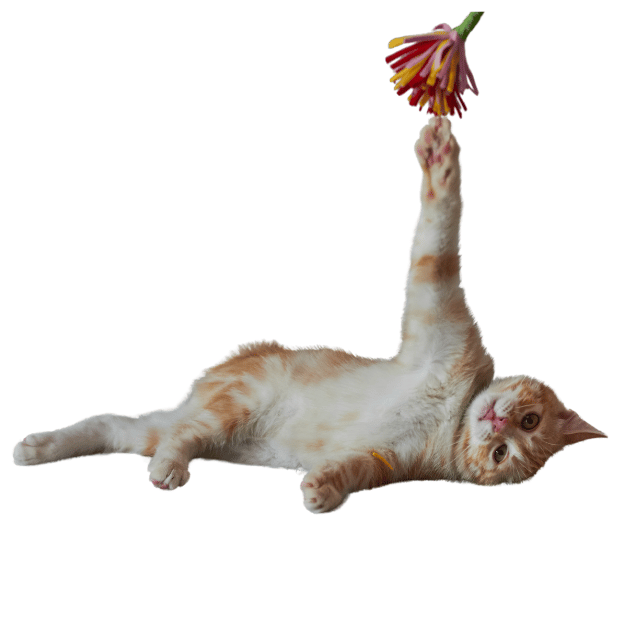
American Bobtails sport moderate energy levels and don’t require extensive exercise, making them perfect for various living situations, from apartments to larger homes. About 30-60 minutes of daily playtime suffices to keep them happy and healthy.
These cats have a dog-like enthusiasm for play—they enjoy fetching small items like faux mice, engaging in puzzle games, and can even be leash-trained for outdoor adventures.
Dietary Considerations for the American Bobtail
From kittenhood through adulthood, the dietary needs of an American Bobtail vary based on age, activity level, and overall health. For the first year, it’s crucial to feed American Bobtail kittens specially formulated kitten food to support their growth and development.
As they mature, transitioning to a high-quality, high-protein diet is key. To keep mealtime interesting and ensure nutritional balance, consider incorporating some wet food into their primarily dry food diet a few times a week. This not only adds variety but also aids in hydration and overall health maintenance.
Grooming Requirements for the American Bobtail Cat Breed
American Bobtails are relatively low-maintenance when it comes to grooming, making them a great choice for those who want a beautiful cat without extensive upkeep. Here’s a quick guide to their grooming needs:
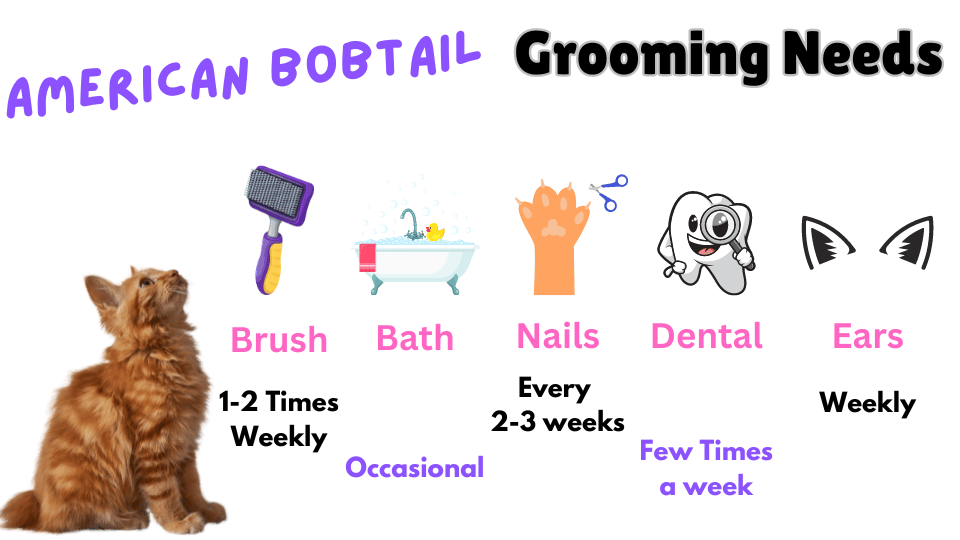
- Brushing: With both short- and long-haired varieties, American Bobtails benefit from brushing once or twice a week to remove loose hair and keep their coat shiny. During their biannual shedding seasons, you may need to increase brushing frequency to manage the extra fur.
- Bathing: American Bobtail cats usually don’t need regular baths. Simply bathe them as necessary, particularly if they’ve managed to get particularly dirty or smelly.
- Nail Trimming: Regular nail trims are important to prevent overgrowth and splitting. Trimming your Bobtail’s nails every 2-3 weeks is recommended.
- Teeth Brushing: Maintaining dental health is crucial to prevent periodontal disease. Brush their teeth several times a week, with a minimum of once weekly. Plaque-controlling treats can complement this routine but shouldn’t replace brushing.
- Ear Cleaning: It’s important to check and clean your American Bobtail’s ears weekly to prevent wax build-up and potential infections. While cleaning every week might not always be necessary, incorporating ear checks ensures any issues are caught and addressed early.
The American Bobtail Cat Breed: A Rare Gem in the Cat World
The American Bobtail cat breed, with its distinctive appearance and endearing personality, holds a unique place in the hearts of cat enthusiasts. However, this breed remains relatively rare in the United States, which can pose a challenge for those looking to adopt one.
Finding a reputable breeder is crucial to ensure that you are getting a healthy, well-socialized kitten that embodies all the wonderful traits this breed has to offer. By investing the time to research and connect with experienced breeders, prospective owners can ensure they contribute positively to the breed’s legacy and enjoy the company of this remarkable feline friend for years to come.
Meet Sean, a fintech whiz with a penchant for pet purrs and blockchain buzz. After a decade of fintech feats, Sean’s tech talents leaped from ledger lines to litter lines, driven by a passion for pets and a vision for a more connected pet care community. With three critter companions as co-pilots, Sean launched this blog to share a treasury of pet-friendly tech tips and tales.

